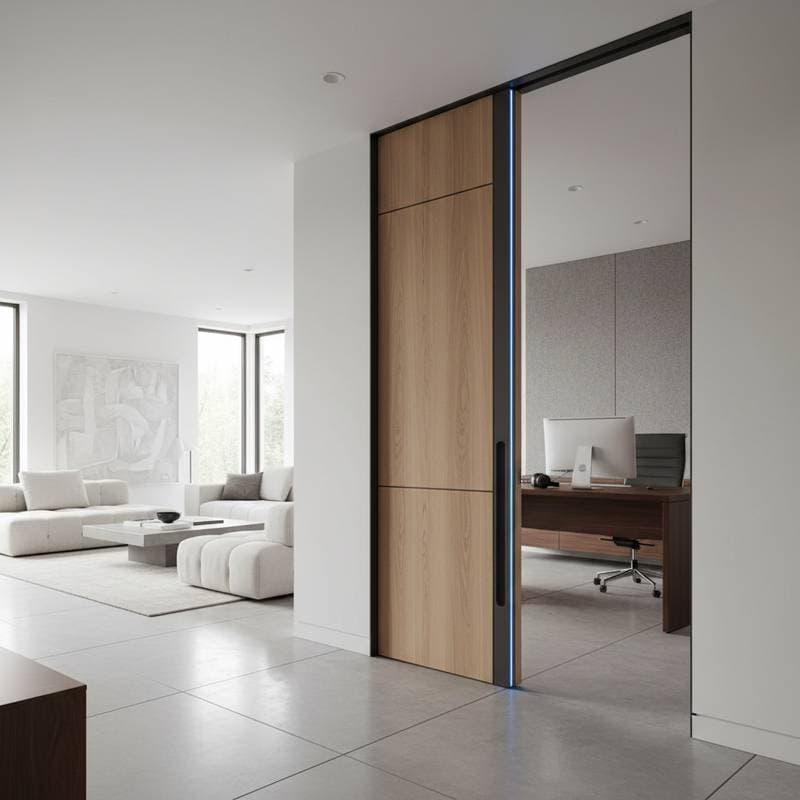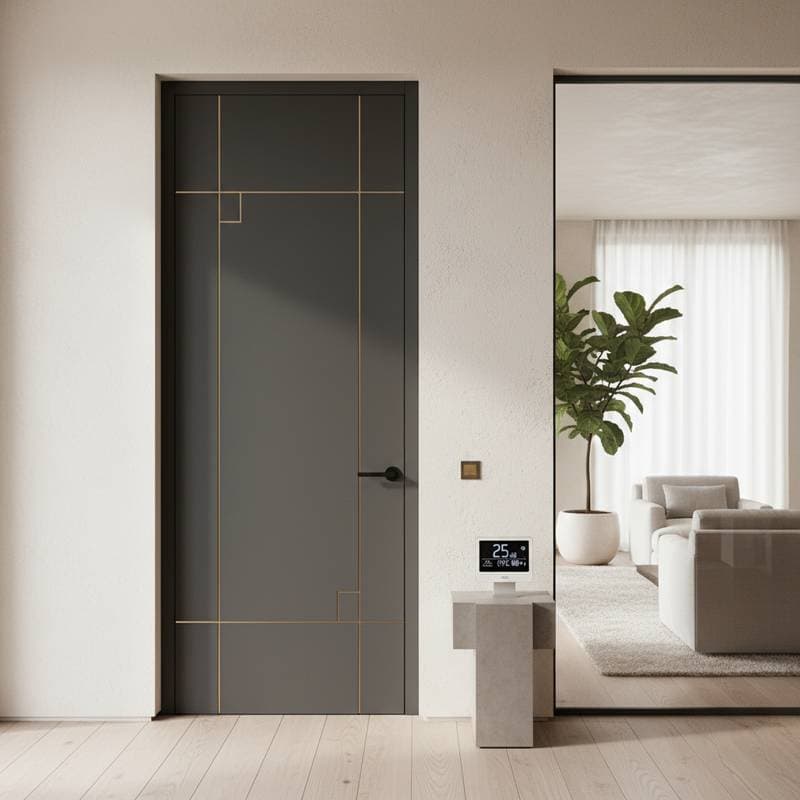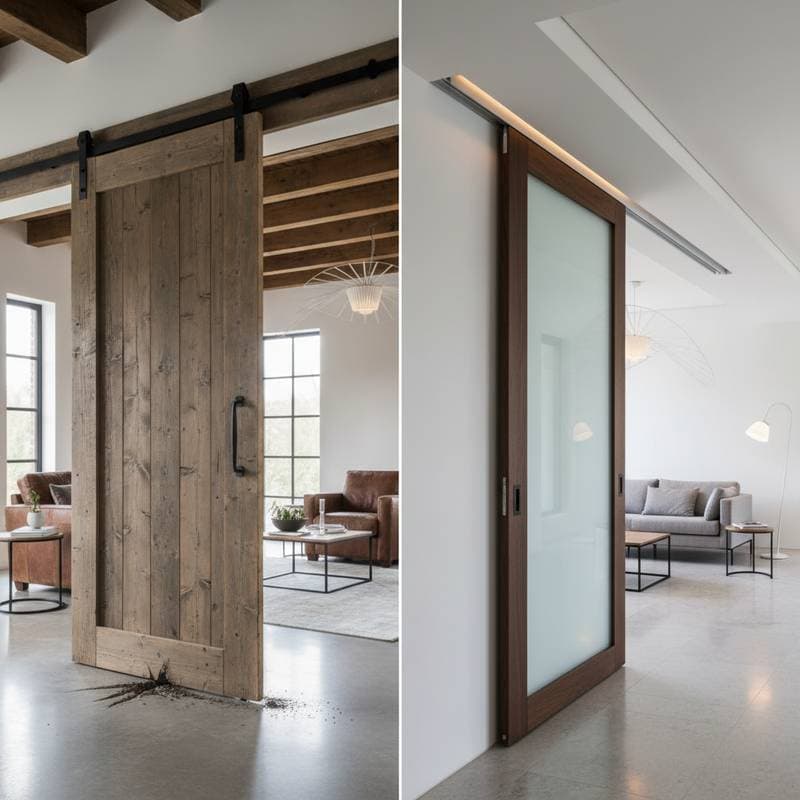Reduce 85% of Noise in Open-Plan Spaces with Acoustic Sliding Doors
Open-plan designs offer style and functionality, yet they often amplify unwanted sounds. Conversations, television audio, and kitchen activities echo without barriers to absorb them. For those who appreciate open layouts yet seek greater tranquility, acoustic sliding doors provide an effective remedy. These contemporary dividers merge sophisticated aesthetics with specialized sound-absorbing components, capable of diminishing up to 85 percent of airborne noise through precise installation.
This guide details the mechanics of acoustic sliding doors, their pricing structure, and their potential to convert bustling open areas into serene retreats.
Pricing Overview for Acoustic Sliding Doors
Prices for acoustic sliding doors depend on factors such as material composition, dimensions, and sound attenuation levels. Homeowners generally allocate between $1,200 and $4,500 per door, encompassing materials and expert installation. Options like bespoke configurations, glass integrations, or unique surface treatments may elevate expenses to $6,000 or higher.
| Material/Style | Cost Range (Installed) | Noise Reduction (Typical) | Key Features |
|---|---|---|---|
| Acoustic glass panel | $1,200 to $2,800 | 40% to 65% | Sleek profile, natural light passage |
| Solid-core wood | $1,800 to $3,500 | 60% to 80% | Substantial density, inviting warmth |
| Double-glazed composite | $2,500 to $4,500 | 70% to 85% | Superior thermal barriers, contemporary appeal |
| Custom multi-panel system | $3,500 to $6,000+ | Up to 85% | Personalized dimensions, premium components |
These estimates cover essential hardware, rail mechanisms, and labor for setup. Supplementary costs might include structural alterations to walls, electrical adaptations, or upgraded acoustic barriers.
Mechanisms Behind Noise Reduction in Acoustic Sliding Doors
Sound propagates via air, solid structures, and mechanical vibrations. Acoustic sliding doors counteract these transmission routes through multiple engineered elements.
- Mass and Density: Substantial panel thickness counters vibrations and limits the passage of sound waves.
- Damping Layers: Integrated acoustic films or multilayered glass capture and dissipate sound energy.
- Sealing Systems: Precision-engineered gaskets eliminate gaps that permit sound infiltration.
- Decoupling Techniques: Certain models feature isolated internal structures or layered separations to interrupt vibrational pathways.
Together, these attributes achieve reductions of up to 85 percent in noise levels, transforming reverberant open plans into composed, manageable areas. Select doors with Sound Transmission Class (STC) ratings above 40 for optimal results in residential settings.
Step-by-Step Installation Guide and Expected Duration
The installation of acoustic sliding doors usually spans one to two days for conventional openings. Professionals follow a structured sequence to guarantee efficacy and durability.
- Site Assessment: Technicians measure the space precisely, evaluate wall integrity, and ready the area for track attachment.
- Frame and Track Setup: Secure the rail system to the ceiling or wall, verifying perfect alignment for effortless operation.
- Panel Assembly: Suspend the panels, fine-tune for fluid movement, and conduct tests to identify any acoustic vulnerabilities.
- Sealing and Completion: Affix soundproofing strips, bottom sweeps, and decorative moldings. Perform final calibrations to confirm secure closure and seamless function.
Complex projects, such as multi-panel customs or adaptations to preexisting walls, demand extra time for reinforcement or surface restoration. Engage certified installers familiar with acoustic specifications to avoid compromising performance.
Essential Maintenance Practices for Sustained Effectiveness
Acoustic sliding doors demand little upkeep, though regular attention preserves their acoustic integrity over time.
- Track Cleaning: Remove accumulated dust and particles monthly using a soft, dry cloth to prevent interference with seals or motion.
- Seal Examination: Identify and replace deteriorated gaskets promptly to sustain airtight barriers against sound.
- Lubrication Routine: Introduce silicone lubricant to rollers and damping features annually or biannually for quiet, reliable gliding.
- Alignment Verification: Address any binding or unusual noises by scheduling professional adjustments to tracks or panel elevations.
Consistent care of these components extends the lifespan of soundproofing capabilities, often exceeding a decade with proper handling.
Ideal Scenarios for Acoustic Sliding Doors
Acoustic sliding doors prove particularly valuable in targeted environments.
- Open-plan residences linking kitchens, dining zones, and lounges
- Dedicated home workspaces requiring isolation from domestic disturbances
- Entertainment rooms where contained audio elevates viewing experiences
- Multi-occupant dwellings or intergenerational households seeking adaptable seclusion
- Professional offices prioritizing acoustic management for enhanced concentration
Persistent ambient noise that hinders relaxation or productivity signals a prime opportunity for these doors to elevate daily comfort.
Selecting Configurations to Suit Your Interior
Acoustic sliding doors come in diverse setups to align with both visual preferences and practical demands.
Single Sliding Door
Suited for compact apertures or private studies, this option delivers straightforward operation and minimalist contours. Opt for solid-core variants to maximize sound suppression in noise-sensitive zones.
Double or Bypass Configurations
These arrangements accommodate broader passages and effectively partition expansive communal areas. Materials like double-glazed composites excel in delivering comprehensive noise control across larger spans.
Pocket Sliding Doors
Designed to retract fully into wall recesses when retracted, pocket doors foster unobstructed vistas. Although installation involves intricate wall preparation, they optimize spatial efficiency in constrained layouts.
Floor-to-Ceiling Installations
Full-height assemblies in glass or composite materials serve as bold statements in contemporary designs. Acoustic-treated glass balances transparency with silence, preserving an airy feel amid sound isolation.
Implementing Acoustic Sliding Doors Effectively
To address excessive noise in open-plan homes, evaluate primary sound pathways, such as transitions between cooking zones and relaxation areas or offices and family spaces.
Seek guidance from specialists in soundproofing solutions. Request documentation on STC ratings, guarantee terms, and material samples to inform your decision.
Post-installation, anticipate substantial noise attenuation, heightened seclusion, and versatile space utilization. Through diligent maintenance, this enhancement endures, fostering a harmonious home that aligns with modern lifestyles.
Acoustic sliding doors transcend mere separation; they represent meticulously crafted interventions that preserve open-plan allure while mitigating auditory disruptions. Select from timber accents or transparent panels to realize a refined, acoustically optimized living space.






